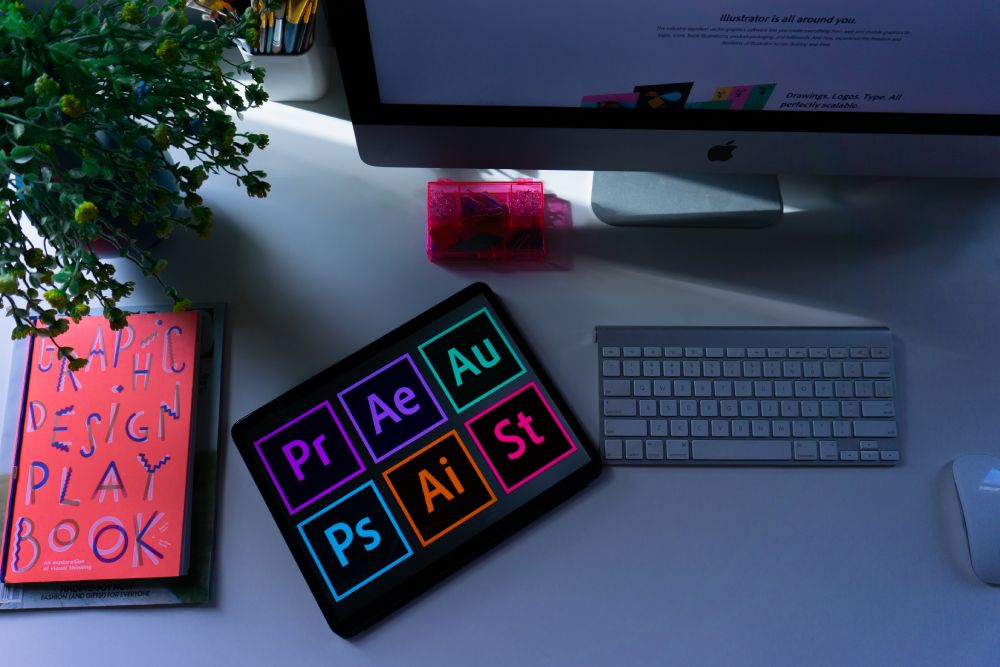The gradual and transformative shift from the conventional and time-intensive practice of manually employing clipping paths to the incorporation of cutting-edge and highly sophisticated AI-driven masking techniques signifies an influential and pivotal evolution in the ever-evolving realm of graphic editing. This comprehensive and in-depth article delves profoundly into the dynamically shifting and evolving landscape of visual editing, exploring the intricate and multifaceted ways in which technology, through relentless innovation, has not only adapted but also fundamentally reconstructed and revitalised the essence of this thriving industry.
Table of Contents
The Origin of Clipping Paths
Graphic editing’s roots trace back to clipping paths—a manual process where designers meticulously outline objects to create precise selections. While this technique served its purpose for many years, it was time-consuming and posed limitations when dealing with complex shapes and intricate details.
The AI Revolution in Masking
The advent and emergence of Artificial Intelligence (AI) into the sphere of graphic editing have unquestionably sparked a transformative and epochal revolution, the repercussions of which ripple through the very foundations of this industry. These monumental shifts are propelled by the relentless advancement of cutting-edge algorithms that have seamlessly taken over and automated tasks that, in yesteryears, were characterised by their labour-intensive nature.
The tangible outcome of this technological leap forward is nothing short of awe-inspiring: attaining precision in graphic masking has become second nature, rendering the previously complex and intricate editing processes accessible to even those with limited expertise, thereby profoundly enhancing efficiency. Consequently, this profound metamorphosis has effectively and markedly diminished the industry’s reliance on the once-pervasive, arduous, and time-consuming manual selection methods that were the norm.
The Mechanics of AI-Driven Masking
AI-driven masking, particularly with the revolutionary technology known as Magic Light AI, transcends the conventional boundaries of graphic editing. It is an intricate and multifaceted process, relying on highly sophisticated algorithms meticulously designed to delve into and unravel the intricacies of an image’s composition and structure.
Advanced Algorithmic Analysis
At its core, AI-driven masking involves deploying cutting-edge algorithms that dissect and scrutinise the image with remarkable precision. These algorithms exhibit a level of sophistication that enables them to identify objects within the image and discern the subtlest contours and nuances present.
Unearthing Subtle Variations in Lighting
A remarkable aspect of AI-driven masking is its ability to unearth even the most subtle variations in lighting conditions. This unparalleled ability ensures that the resulting selections and masks are impeccable, regardless of the image’s lighting intricacies.
Streamlining the Selection Process
What sets AI-driven masking apart is its remarkable efficiency. Swiftly and accurately identifying the various elements within an image simplifies the selection process to an unprecedented degree. This expedites the editing workflow and empowers professionals to devote more time and energy to the creative aspects of their work.
Empowering Creative Vision
The most profound impact of AI-driven masking is its capability to liberate professionals from the technical intricacies of manual selection. With this level of automation, creative vision takes centre stage, enabling artists, designers, and photographers to focus on realising their artistic ideas without being bogged down by the complexities of the selection process.
The Advantages of AI Masks
The adoption of AI image masking has brought numerous benefits. It significantly boosts productivity and enhances the quality of edited images. Designers can achieve precise selections in a fraction of the time, opening doors to more intricate and refined editing techniques.
The Future of Graphic Editing
As technology advances, the possibilities for graphic editing continue to expand. The shift from traditional clipping paths to AI-driven masking is just one example of how innovation shapes the industry. With AI’s continued development, graphic designers and photographers can anticipate even more groundbreaking tools and techniques to enhance their creative processes.

The Role of AI in Graphic Editing Software
Leading graphic editing software companies have recognised the potential of AI-driven masking. They have incorporated these advanced techniques into their software to enhance users’ capabilities. These tools, like Luminar Neo and other AI-driven editors, not only simplify complex editing tasks but also empower users to achieve results that were previously difficult to attain.
The evolution of graphic editing, driven by AI advancements, has ushered in an era of creative freedom. Designers and photographers can explore new horizons, experiment with intricate editing, and deliver outstanding results efficiently. It’s a time when imagination is the only limit.
Conclusion
The evolution of graphic editing from manual clipping paths to advanced AI-driven masking represents a transformative journey. These advancements have empowered professionals to achieve higher levels of precision and efficiency. As technology continues to evolve, the future of graphic editing promises even more exciting possibilities for creative expression. With AI at the helm, visual editing is poised to reach new heights, inspiring innovative and visually stunning creations.









